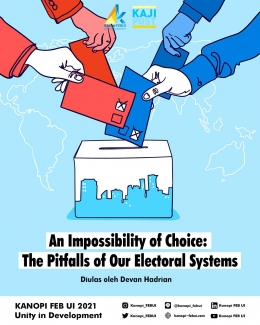When we create a rank order of preferences, we surely expect it to be consistent. For example, consider a case where we have three candidates in an election. If most voters prefer candidate A over B, and candidate B over C, then they should also prefer A over C. In economics, this is often called the transitivity principle. Yet our paradox arises as a natural consequence of social ordering itself. Even when the preferences of all voters are consistent, the aggregated social preference, or the voting result, may not be (Condorcet, 1785). Continuing our previous example, suppose we have three voters participating in the election with their respective individual preferences listed below:
Voter 1 prefers candidate A over B over C
Voter 2 prefers candidate B over C over A
-
Voter 3 prefers candidate C over A over B
As seen above, every voter has a clear transitivity between their choices. The question then becomes: Who should win? Here, we can see that each candidate has the same number of 1st-rank, 2nd-rank, and 3rd-rank votes. If we pick A as a winner, it's clearly a mistake since two out of three people prefer C over A. If we pick C, it also faces the same problem in which two people prefer B over C. So, B should be the winner, right? No, since two people prefer A over B. Essentially, this creates a self-repeating cycle that breaks the transitivity principle, even when all the individual votes are consistent in their preference. Hence, this impossibility of determining collective preferences became a paradox.
Condorcet's groundwork was further expanded upon by the American economist Kenneth Arrow, whose eponymous theorem was published in 1951 under the title "Social Choice and Individual Values". This heavily mathematical theorem, later known as Arrow's impossibility theorem, concluded that it is impossible to formulate the social ordering of an election without breaking one of these conditions (Arrow, 1963):
Nondictatorship (no voter has control over others)
Pareto efficiency (consistency between individual and social preference)
-
Independence of irrelevant alternatives (removing a losing alternative would not change the election results)
Unrestricted domain (all individual preferences are allowed)
In a way, we can say that these are the conditions for a "perfect" election. However, Arrow showed that regardless of the system being used, any election will inevitably break one of them. Thus, the theorem is often interpreted as stating that no voting system is perfect. While Arrow's mathematical approach is vastly different from what we previously observed, it still reaches the same conclusion that every electoral system has their own pitfalls and shortcomings.







